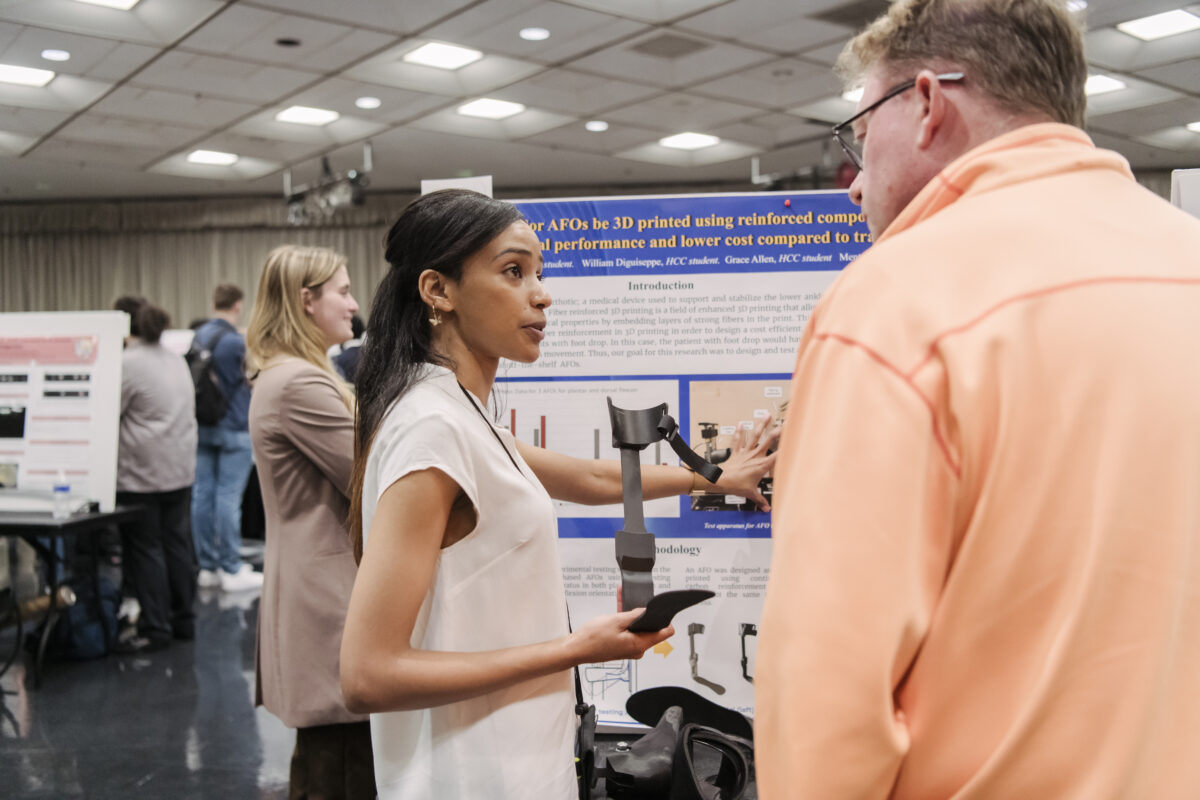UMBC biologists Phyllis Robinson and Preethi Somasundaram may have identified a key factor that contributes to our understanding of biological clocks and associated disorders, such as non-24 and seasonal affective disorder. Their new research focuses on the role of melanopsin, a retinal protein, in aspects of unconscious vision that regulate the biological clock.
Unconscious vision, or non-image-forming vision, is an often-underappreciated function of the eyes. While we look around, our eyes are doing more than processing what we consciously see. Specialized cells in our eyes also constantly send messages to the brain that regulate our circadian rhythms, sleep patterns, pupil size, and even our mood. One of the brain areas these messages head to is the superchiasmic nucleus (SCN), which Robinson, professor of biological sciences, calls the “master clock.”
“The SCN controls a lot of physiological functions,” Robinson explains, “from appetite to the ability to do math.”
For our internal clock to work, the specialized cells must effectively respond to light, sending messages when light is present and turning off when things go dark. Robinson and Somasundaram have found that a modified version of melanopsin in the cells can result in messages continuing to be sent long after the lights go out, which affects various behaviors. In other words, broken melanopsin breaks our bodies’ master clock.
For her dissertation, Somasundaram, a Ph.D. candidate in biology, tested how mice’s pupils reacted when she exposed them to a flash of light and then placed them in darkness. The normal response in any mammal is for the pupil to constrict upon exposure to light and then dilate again in darkness. This reflex is important to protect the retina from damage caused by excessive light, and it allows us to see consistently under varying light conditions. In Somasundaram’s experiments, mice with normal melanopsin and modified melanopsin both constricted their pupils similarly when shown a flash of light, but it took the mice with modified melanopsin almost 100 times as long to dilate their pupils again in the dark—9.5 minutes compared to 4.6 seconds on average in normal mice.
“When you think about signaling,” says Robinson, “you want the signal to turn on when it detects something, but then turn off so it can detect something else.” By taking nearly 100 times as long to turn off, the broken melanopsin doesn’t transmit any new input to the brain during its extended “on” period, which affects behaviors that rely on that information.
Somasundaram also tested the effect of melanopsin on a longer time scale by looking at jet lag. She exposed the mice to an artificial time change of six hours (similar to flying from Amsterdram to New York). The mice with normal melanopsin took 5.6 days to adjust their activity to the new cycle, but those with broken melanopsin adjusted in just 2.8 days on average.
These two dramatic results, both shown for the first time in an animal, demonstrate that melanopsin plays a major role in clock-driven behaviors. If it turns out that human patients with clock-related disorders have the same kind of modification in melanopsin as Somasundaram’s mice, that would suggest further melanopsin research could eventually lead to treatments for these disorders.
Melanopsin is found in five subtypes of the specialized cells that regulate unconscious vision. Somasundaram’s work only tested a subset of them, so she and Robinson are now looking ahead to using CRISPR (a new, more realistic genetic modification technique) to test the other subtypes for melanopsin’s possible effects on behaviors like sleep and learning. This future research was just recently supported by a five-year grant from the National Eye Institute.
Many currently prescribed medicines target the class of proteins that melanopsin belongs to, but, Robinson explains, “There aren’t any drugs on the market that I know of that target the turn-off mechanism for melanopsin.” If melanopsin turns out to be the culprit behind biological clock disorders or behaviors like insomnia, that could change.
Photo by Alessandro Lorizzo, used under CC 2.0 license.




